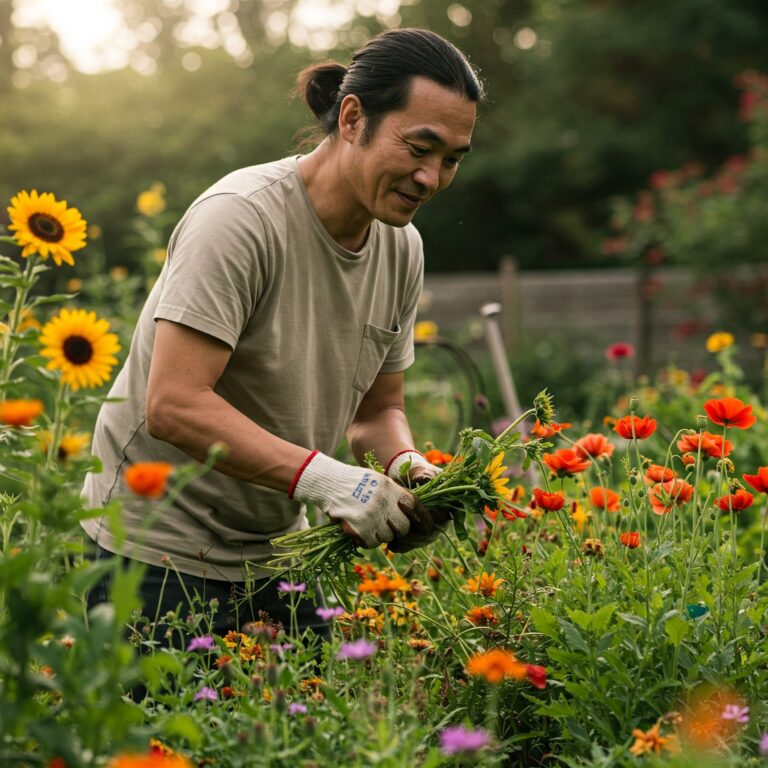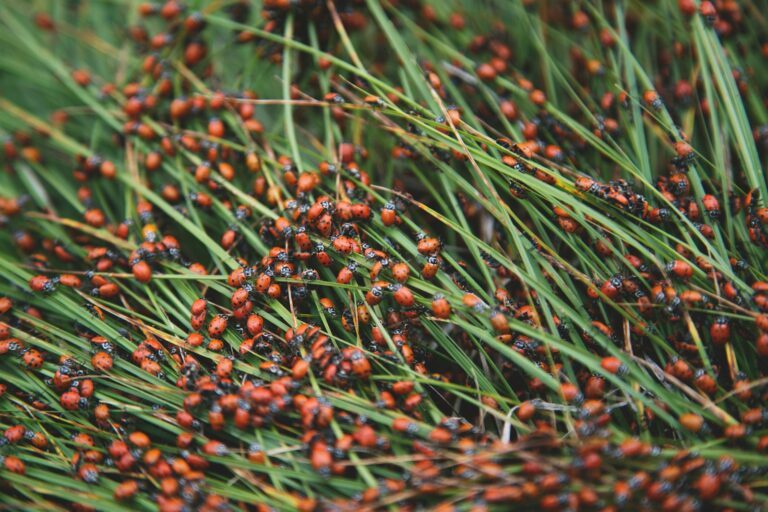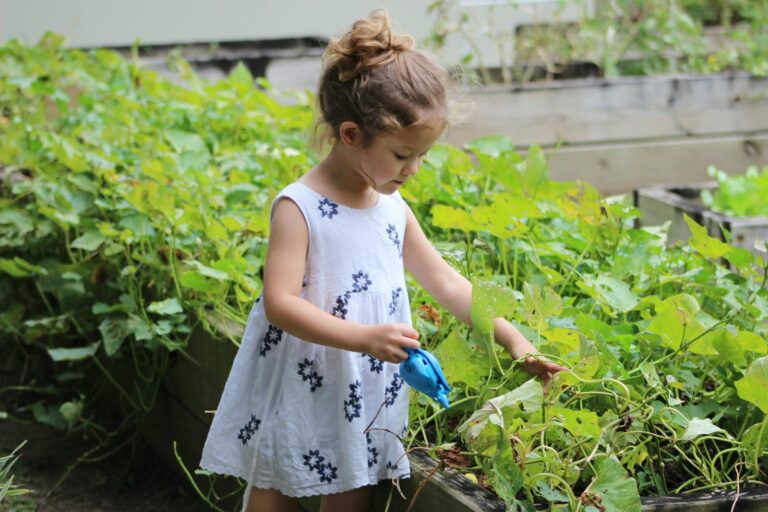How Plants Help with Anxiety and Overthinking?
In a world that seems to move increasingly faster, with notification pings, deadlines, and constant connectivity, anxiety and overthinking have become unwelcome companions for many of us. While there are numerous approaches to managing these mental health challenges, one solution might be greener than you think. Plants those leafy, sometimes flowering organisms that quietly exist alongside us have remarkable effects on our psychological well-being that science is only beginning to fully understand.
Whether you’re a seasoned plant parent with a jungle-like home or someone who has never managed to keep even a cactus alive, the relationship between plants and mental wellness offers something valuable for everyone. This isn’t just about aesthetics or the satisfaction of a green thumb; it’s about genuine psychological and physiological benefits that can help calm an anxious mind and break cycles of overthinking.
In this article, we’ll explore the fascinating ways plants can become allies in our quest for mental peace. From the science behind why greenery calms our nervous systems to practical ways of incorporating plants into anxiety management routines, we’ll dig into the soil of this topic and uncover the roots of plant-based wellness.
The Science Behind Plants and Mental Health
The connection between plants and psychological well-being isn’t just anecdotal it’s backed by a growing body of research. Our brains and bodies respond to plants in measurable ways that directly impact anxiety and thought patterns.

When researchers at the University of Hyogo in Japan studied office workers in 2020, they found that simply having a small plant on their desk decreased anxiety scores by almost 37% compared to workers without plants. The study, published in the Journal of Environmental Psychology, demonstrated that even passive interaction with plants just having them in your visual field produced significant calming effects.
This isn’t surprising when we consider our evolutionary history. For most of human existence, we’ve been surrounded by greenery, not concrete and screens. Our brains are literally wired to feel at ease in natural settings, a concept known as “biophilia” the inherent human tendency to connect with nature and other living things.
The Physiological Response to Plants
When we interact with plants, several measurable physical changes occur in our bodies:
- Blood pressure decreases
- Cortisol (the stress hormone) levels drop
- Heart rate variability improves, indicating better stress resilience
- Immune function strengthens
A landmark study conducted by NASA in 1989 found that plants can remove toxins like benzene, formaldehyde, and trichloroethylene from the air. While more recent research suggests these effects may be modest in typical home settings compared to lab conditions, even small improvements in air quality can support brain function and potentially reduce anxiety-provoking physical symptoms.
The Attention Restoration Theory
One fascinating explanation for plants’ mental benefits comes from the Attention Restoration Theory proposed by psychologists Rachel and Stephen Kaplan. This theory suggests that natural environments help our brains recover from the mental fatigue caused by directed attention the kind of focus required for work, studying, or navigating busy environments.
When we’re overthinking or anxious, our directed attention is often overworked. Plants and natural settings provide what researchers call “soft fascination” they hold our attention in a gentle, effortless way that allows our cognitive resources to replenish. This is why a walk in the park or even gazing at a houseplant can sometimes help break a cycle of rumination better than trying to “think your way out” of anxiety.
The Therapeutic Practice of Plant Care
Beyond their passive benefits, actively caring for plants offers its own unique set of mental health advantages. The routine of tending to another living thing creates a gentle structure that can help anchor an anxious mind.
Plant care involves mindfulness almost by necessity. When you’re checking soil moisture, removing dead leaves, or inspecting new growth, you’re naturally pulled into the present moment. This present-focused attention is precisely what meditation aims to cultivate, but plant care offers a tangible, practical pathway to mindfulness that many find more accessible than formal meditation practices.
Dr. Dominique Makowski, a neuroscientist at Nanyang Technological University in Singapore, notes that “Plant care activates the parasympathetic nervous system our rest-and-digest mode in ways similar to other mindfulness practices. The difference is that plants provide immediate visual feedback that reinforces the calming effect.”
The Reward of Nurturing Growth
There’s something profoundly satisfying about witnessing growth that you’ve supported. When a plant puts out new leaves or flowers under your care, it provides a gentle reminder of your capability to nurture life a powerful antidote to the feelings of helplessness that often accompany anxiety.
A 2022 study published in Urban Forestry & Urban Greening found that participants who engaged in gardening for just 30 minutes showed significant reductions in anxiety and negative thought patterns compared to a control group. The researchers attributed this not just to the physical activity involved but to the psychological rewards of nurturing living things.
The cycle of plant care offers small, achievable successes that can build confidence and create positive thought patterns to replace anxious rumination. Even the most experienced gardeners face plant challenges and losses, which provides gentle lessons in resilience and acceptance valuable skills for managing anxiety in other areas of life.
Biophilic Design: Creating Anxiety-Reducing Spaces
The concept of biophilic design incorporating elements of nature into built environments has gained significant traction in architecture and interior design. This approach isn’t just about aesthetics; it’s about creating spaces that fundamentally support mental well-being.
Research from the University of Melbourne found that just 40 seconds of looking at a green roof provided significant cognitive restoration compared to looking at a concrete roof. When applied to home and office spaces, these principles can create environments that actively reduce anxiety rather than contribute to it.
Elements of Anxiety-Reducing Plant Spaces
Creating a space that maximizes the anxiety-reducing benefits of plants involves more than simply adding a few potted friends to a room. Consider these evidence-based approaches:
- Layered greenery: Varying heights and types of plants create a more naturalistic environment that better triggers our innate biophilic response.
- Fractal patterns: Plants naturally display fractal patterns self-similar shapes that repeat at different scales. These patterns have been shown to reduce physiological markers of stress by up to 60% according to research from the University of Oregon.
- Natural light: Positioning plants near windows where they receive natural light creates a double benefit healthier plants and the anxiety-reducing effects of natural light exposure for humans.
- Sensory engagement: Including plants with different textures, subtle scents, or gentle movement (like grasses that sway with air currents) creates multi-sensory experiences that more effectively interrupt anxious thought patterns.
Dr. Sally Augustin, an environmental psychologist and principal at Design With Science, explains: “We’ve evolved in natural spaces with particular characteristics semi-open views, protective elements, and diverse yet coherent sensory information. When we recreate these elements with plants in our living spaces, we’re essentially giving our nervous systems the environment they’re optimized for.”
Specific Plants with Anxiety-Reducing Properties
While all plants offer general benefits for mental well-being, certain species have properties that make them particularly effective for addressing anxiety and overthinking.
Aromatherapeutic Plants
Some plants release compounds that directly affect our neurochemistry when inhaled. Lavender is perhaps the best-known example, with multiple studies confirming its anxiety-reducing effects. Research published in the journal Phytomedicine found that lavender oil was as effective as the prescription drug lorazepam for treating generalized anxiety disorder, without the side effects or dependency risks.
Other plants with evidence-backed calming aromatherapeutic properties include:
- Jasmine: Studies from Wheeling University found that jasmine’s scent increased GABA activity in the brain, creating a calming effect similar to some anxiety medications.
- Rosemary: Research published in Therapeutic Advances in Psychopharmacology showed that rosemary scent improved memory while reducing cortisol levels.
- Holy Basil (Tulsi): Considered an adaptogen in Ayurvedic medicine, studies in the Journal of Ayurveda and Integrative Medicine suggest it can help regulate stress responses at a cellular level.
Low-Maintenance Companions for the Anxious Mind
For those whose anxiety might be worsened by the pressure of keeping demanding plants alive, these low-maintenance options offer benefits without adding stress:
- Snake Plant (Sansevieria): Exceptionally tolerant of neglect, snake plants release oxygen at night and have been shown to filter air pollutants effectively.
- ZZ Plant: Nearly indestructible, these glossy plants thrive in low light and can go weeks without water.
- Pothos: With attractive trailing vines and the ability to grow in water alone, pothos plants provide visual interest with minimal care requirements.
Dr. Melinda Knuth, a horticulture researcher at North Carolina State University, notes that “The best plant for anxiety is one that matches your lifestyle and doesn’t become an additional source of stress. A thriving low-maintenance plant is far better for mental health than a struggling high-maintenance one.”
Plant-Based Rituals for Anxiety Management
Beyond their passive presence, plants can be incorporated into intentional rituals that specifically target anxiety and overthinking. These rituals combine the benefits of plants with evidence-based psychological techniques for managing anxious thoughts.
Morning Grounding Practice
Starting the day with a plant-based grounding ritual can set a foundation of calm that helps prevent anxiety from escalating. A study in the Journal of Health Psychology found that morning routines involving nature connection were associated with lower daily stress levels and improved resilience to challenging events.
A simple morning plant ritual might include:
- Checking on your plants while taking five deep breaths
- Mindfully watering any plants that need attention
- Touching a few leaves while setting an intention for the day
- Pruning any dead growth as a symbolic release of what no longer serves you
The “Leaf and Let Go” Technique
When overthinking strikes during the day, the “Leaf and Let Go” technique offers a plant-based approach to thought defusion a psychological process of creating distance from troubling thoughts:
- Notice the anxious thought
- Find a plant and select a leaf
- Imagine placing the thought onto the leaf
- Watch how the leaf holds the thought but isn’t defined by it
- Notice how the plant continues its natural processes regardless of what thoughts are placed on it
This practice, adapted from acceptance and commitment therapy principles, uses plants as tangible metaphors for a healthier relationship with difficult thoughts.
Community and Connection Through Plants
While individual plant care offers significant benefits for anxiety, the communal aspects of plant appreciation can provide additional layers of support for mental well-being.
Plant-sharing communities, community gardens, and even online plant forums create opportunities for social connection centered around a calming shared interest. These connections offer what psychologists call “weak ties” relationships that provide social support without the potential stress of closer relationships.
Research published in the International Journal of Environmental Research and Public Health found that community gardening participants reported significantly lower levels of anxiety and depression compared to control groups. The researchers attributed this not just to the gardening itself but to the sense of community and shared purpose it fostered.
From Virtual to Actual Communities
The plant community flourishes both online and offline:
- Plant swap events allow people to exchange cuttings and knowledge, creating local networks of plant enthusiasts
- Community gardens provide access to growing spaces for those without yards or suitable homes for plants
- Social media plant communities offer support, troubleshooting, and celebration of plant milestones
Dr. Charles Hall of Texas A&M University, who studies the economic and wellbeing impacts of horticulture, notes: “What we’re seeing is that plants create ‘third places’ social environments separate from home and work where people can connect around a shared interest that inherently promotes wellbeing. This combination of nature connection and social connection is particularly powerful for anxiety reduction.”
Integrating Plants into Broader Mental Health Approaches

While plants offer genuine benefits for anxiety and overthinking, they’re most effective when integrated into a comprehensive approach to mental wellbeing. Rather than viewing plants as a standalone solution, consider them valuable tools within a broader mental health toolkit.
Complementary Approaches
Plants work particularly well alongside these evidence-based approaches:
- Cognitive Behavioral Therapy (CBT): Plants can serve as physical reminders of CBT concepts, such as the way a thriving plant in challenging conditions demonstrates resilience and adaptation.
- Mindfulness practices: As mentioned earlier, plant care naturally encourages mindfulness, making it an excellent gateway for those who struggle with more formal meditation.
- Physical activity: Combining plant care with movement whether through gardening or simply stretching near your houseplants amplifies the benefits of both.
Dr. Lise Van Susteren, a psychiatrist specializing in the psychological impacts of climate change, explains: “Plants don’t replace traditional mental health interventions when they’re needed, but they do offer something unique a living connection to natural processes that have governed human experience far longer than our modern sources of anxiety. This connection taps into ancient pathways of calm in our brains.”
When to Seek Additional Support
It’s important to recognize that while plants can support mental wellbeing, severe anxiety may require professional intervention. Plants can be part of recovery but shouldn’t delay seeking appropriate care when needed.
Signs that additional support may be beneficial include:
- Anxiety that significantly interferes with daily functioning
- Panic attacks
- Persistent insomnia due to worrying
- Inability to control worry despite multiple strategies
Conclusion: Growing Towards Calm
Throughout human history, our relationship with plants has been one of reciprocal care we tend to them, and in ways both obvious and subtle, they tend to us. In our modern context of increasing anxiety and digital overload, rediscovering this relationship offers a path back to more balanced mental states.
The research is clear: from the air-purifying properties discovered by NASA to the attention restoration benefits documented by environmental psychologists, plants provide measurable support for anxious minds. Whether through the mindful practice of plant care, the creation of biophilic spaces, or the community connections fostered through shared plant appreciation, these green companions offer multiple pathways to reduced anxiety and overthinking.
As we continue to navigate a world that often seems designed to amplify anxiety, perhaps one of our most powerful tools grows quietly on our windowsills, balconies, and in our gardens. By intentionally cultivating our relationship with plants, we simultaneously cultivate greater peace of mind.
The next time overthinking begins its familiar spiral, or anxiety tightens its grip, consider turning to the plants around you. Touch a leaf, repot a struggling friend, or simply sit in the presence of your green companions. In the quiet wisdom of plants their patience, resilience, and continuous growth despite challenges we might find exactly the reminder we need to breathe, center, and return to our own natural state of calm.





